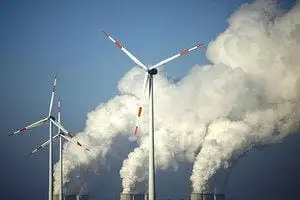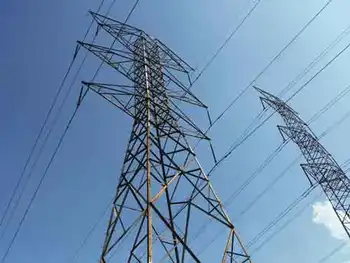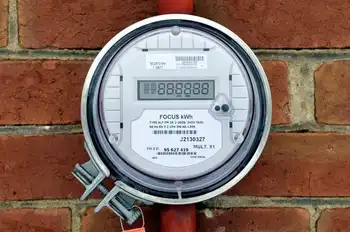U.S. coal stakes future on carbon capture
By Reuters
Arc Flash Training CSA Z462 - Electrical Safety Essentials
Our customized live online or in‑person group training can be delivered to your staff at your location.

- Live Online
- 6 hours Instructor-led
- Group Training Available
Legislation from Congress or tough new regulatory demands could make it costly to spew greenhouse gases, posing a serious threat to the nation's coal-fired power plants.
With coal the single biggest source of carbon emissions, industry backers are pinning their hopes on technology to trap and store these emissions blamed for heating up the planet.
Carbon capture technology is far from a done deal, however. Unproven on a commercial scale, the process is extremely expensive and there are a multitude of safety concerns.
"Right now we have politicians making promises about the technology of carbon capture and sequestration (CCS) that scientists don't know that they can meet," said Graham Thomson, author of a peer-reviewed study for the University of Toronto.
The stakes in this technology are also high for American consumers, who rely on abundant domestic coal for around half of the country's electricity generation.
On the global stage, leaders from around the world will meet next month in Copenhagen to try to agree on binding international targets for reducing greenhouse gas emissions.
With coal the source of 40 percent of global carbon emissions, talks on funding for carbon capture will also likely be a key part of these negotiations.
For American Electric Power Chief Executive Mike Morris, there is no question that this technology is necessary and feasible.
In his office atop AEP's headquarters in Columbus, Ohio, Morris told Reuters: "This country and countries of the world are going to have an approach to cap carbon."
The U.S. House of Representatives narrowly passed climate legislation this year that would limit U.S. greenhouse gas emissions by requiring major polluters to get permits for the carbon they release into the atmosphere.
Although most permits would be free at first, eventually companies would have to pay for or reduce their emissions, which could possibly put major emitters out of business.
In the Senate, key lawmakers are working to craft a similar law that would garner enough support for passage.
If no bill emerges from Congress, the Environmental Protection Agency has taken steps to regulate emissions under the Clean Air Act.
One of the country's largest electricity generators, AEP is spending money to match the rhetoric. Partnering with the French engineering company Alstom, AEP is pioneering a project that will trap coal emissions and inject the carbon underground at its Mountaineer power plant in West Virginia.
The $73 million test project, which began fully operating last month, is billed as the first in the world that brings all the components of trapping, transporting and storing carbon together at an existing coal plant.
The company hopes it will lead to the first U.S. commercial-scale CCS project, at a cost of about $670 million.
Located amid rolling hills along the Ohio River, AEP's existing plant is a 1,300-megawatt behemoth consuming 12,000 tonnes of coal daily at full capacity.
Using technology developed by Alstom, the demonstration project at Mountaineer captures some of the carbon dioxide produced by the plant and transfers it through pipelines to two sites where it is pumped underground.
"The issue of global warming control is a technology challenge and this project and others like it will demonstrate there is a technological answer," Morris said. "But... we all need to realize it isn't a free move."
The cost of carbon capture will be high. Earlier this month the International Energy Agency said the world will need to spend $56 billion by 2020 to build 100 such projects, with an additional $646 billion needed from 2021-30.
A report released by the Global CCS Institute in Australia earlier this year said technology development is caught in a classic "Catch-22" situation.
"The only way costs can decrease is by installing a large number of CCS projects worldwide," it said.
Governments may have to foot the bill for many of the upfront costs. AEP has applied to have the U.S. government cover about half the cost of its commercial-scale project.
The technology uses up to 30 percent of a plant's power, meaning it uses more coal and makes less electricity for sale.
Even with advances in technology, consumers will still face some of the costs, said Franklin Orr, director of the Precourt Institute for Energy at California's Stanford University.
"We're going to have to charge ourselves enough for the electricity to pay those costs," he said.
Although hailed by U.S. Energy Secretary Steven Chu as an essential technology, some critics question whether it will be possible to safely trap and store carbon for decades on the scale necessary to address global warming.
To make a serious dent in carbon emissions, billions of tons of CO2 will have to be injected underground.
There are also concerns about leaks from the storage areas. Carbon dioxide in high concentrations can cause asphyxiation but such accidents are considered unlikely. And there are also worries that drinking water sources could be contaminated.
"We're putting a lot of our eggs in one basket, when in fact it may not work at a commercial scale," Thomson said.
Other experts say these concerns can be addressed by ensuring that companies only inject carbon underground in areas that are geologically suited to hold and absorb the gas.
"I'm convinced that can be done safely," Orr said. He noted that industries routinely handle much more dangerous compounds such as methane gas.
While there are many doubters, the march toward deployment of carbon capture technology continues. Governments around the world continue to offer incentives, and funding to trap carbon may be part of international climate change negotiations.
"CCS is the only climate change solution we have for the existing fleet of coal-powered power plants," said Sarah Forbes of the World Resources Institute.











